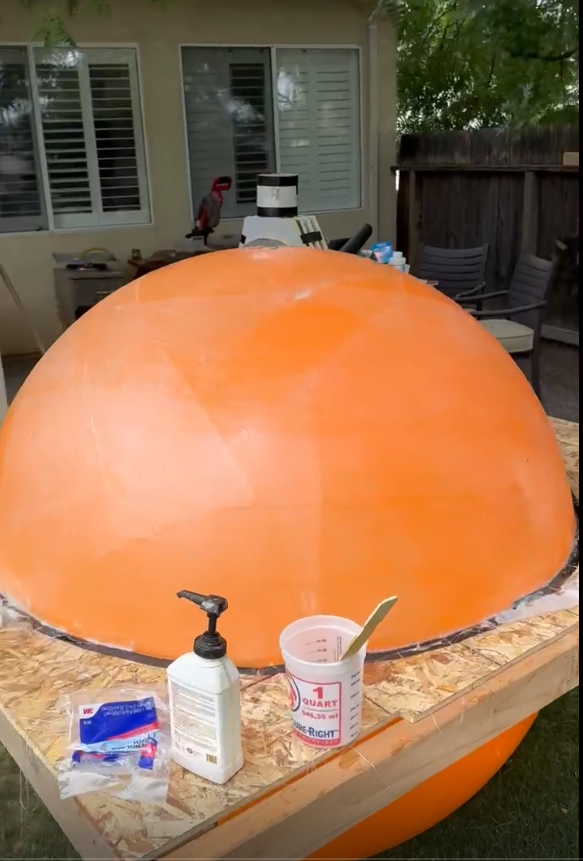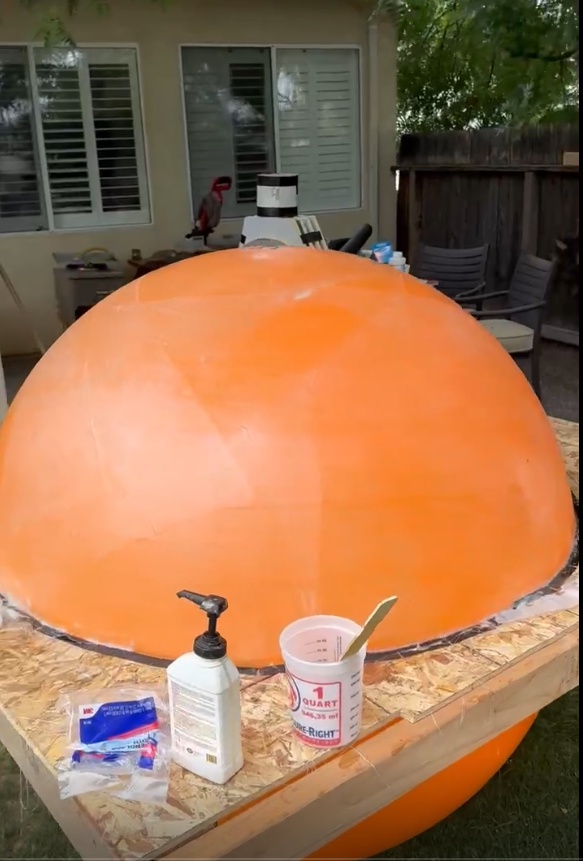Hey Forno Bravo Forums,
I have been lurking on this forum for a couple of years now. Last year I did a backyard 40" Pompeii-style refractory cast build, so I am slightly familiar with the process.
To explain the situation a little bit, I just graduated college and want to start a small business. After building my 40" oven, I put a lot of time into learning how to make good Neapolitan pizza; go figure. Now I want to open a food truck in my hometown (population of around of almost 500,000) that only has one restaurant that offers true Neapolitan pizza. I see an opening in the market.
Anyways, I am looking to build a 48" cast build on an enclosed trailer to make this business plan possible; I need this size so that I can keep production up. I have done research on this forum about builds similar to what I am trying to do, but wanted to run some ideas past the forum, and I will keep the forum updated with my progress and what I learn during this process.
I am casting my dome using a mold I made using fiberglass and a 48" medicine ball. I want to do a one-piece cast, I have heard this is good for damage prevention when on a trailer. I have the means of moving it onto the trailer with a forklift so weight is not a problem.
Next, I want to cast the gallery as well, where I will make a form to cast the gallery. The details and technique I will use to do this is to be determined, I still need to do some reearch and experimentation on how I can execute this properly. This is once again done for the sake of being on a trailer, I do not want mortar joints that are going to "crumbe to bits" as the infamous David would say.
The mix I will be using is a homebrew of fire clay, Portland cement, vermiculite, and sand with silica. What I want to add to the homebrew is either stainless steel needles for reinforcement or basalt fibers I have heard is the new thing to add.
Most of my questions are about the base of the oven, however. Something I need to take into account is weight, I want to minimize weight as much as possible without losing out on oven performance. The way I thought I could do this was by reducing the depth and size of my hearth, but I am not quite sure how the decrease in thermal mass would affect performance. The dome would be about 2 inches thick of refractory cement and then 3 inches of thermal blanket. I would use medium-duty firebricks for the floor and 2 inches of CaSi board beneath. Beneath that, I plan on having the 2-inch hearth. Does anyone foresee problems with this?
Lastly, for the stand, I plan on creating some sort of steel structure to put the heart on. This is something I am not familiar with as well because, in my previous build, I used cinderblocks for the base. But obviously the weight of that is immense.
Any input is greatly appreciated and if anything needs to be explained or drawn out, I can do that. Just trying to get a post out to get the ball rolling.
Thank you everyone for creating such a good resource, without you guys I would have never came across this passion of mine.
I have been lurking on this forum for a couple of years now. Last year I did a backyard 40" Pompeii-style refractory cast build, so I am slightly familiar with the process.
To explain the situation a little bit, I just graduated college and want to start a small business. After building my 40" oven, I put a lot of time into learning how to make good Neapolitan pizza; go figure. Now I want to open a food truck in my hometown (population of around of almost 500,000) that only has one restaurant that offers true Neapolitan pizza. I see an opening in the market.
Anyways, I am looking to build a 48" cast build on an enclosed trailer to make this business plan possible; I need this size so that I can keep production up. I have done research on this forum about builds similar to what I am trying to do, but wanted to run some ideas past the forum, and I will keep the forum updated with my progress and what I learn during this process.
I am casting my dome using a mold I made using fiberglass and a 48" medicine ball. I want to do a one-piece cast, I have heard this is good for damage prevention when on a trailer. I have the means of moving it onto the trailer with a forklift so weight is not a problem.
Next, I want to cast the gallery as well, where I will make a form to cast the gallery. The details and technique I will use to do this is to be determined, I still need to do some reearch and experimentation on how I can execute this properly. This is once again done for the sake of being on a trailer, I do not want mortar joints that are going to "crumbe to bits" as the infamous David would say.
The mix I will be using is a homebrew of fire clay, Portland cement, vermiculite, and sand with silica. What I want to add to the homebrew is either stainless steel needles for reinforcement or basalt fibers I have heard is the new thing to add.
Most of my questions are about the base of the oven, however. Something I need to take into account is weight, I want to minimize weight as much as possible without losing out on oven performance. The way I thought I could do this was by reducing the depth and size of my hearth, but I am not quite sure how the decrease in thermal mass would affect performance. The dome would be about 2 inches thick of refractory cement and then 3 inches of thermal blanket. I would use medium-duty firebricks for the floor and 2 inches of CaSi board beneath. Beneath that, I plan on having the 2-inch hearth. Does anyone foresee problems with this?
Lastly, for the stand, I plan on creating some sort of steel structure to put the heart on. This is something I am not familiar with as well because, in my previous build, I used cinderblocks for the base. But obviously the weight of that is immense.
Any input is greatly appreciated and if anything needs to be explained or drawn out, I can do that. Just trying to get a post out to get the ball rolling.
Thank you everyone for creating such a good resource, without you guys I would have never came across this passion of mine.







Comment